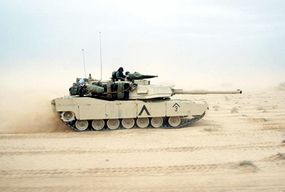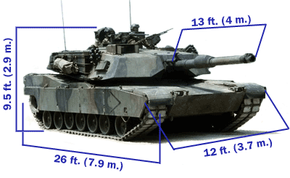The M1 Tank Engine
The M1 uses a 1,500-horsepower gas turbine engine to achieve high mobility. Gas turbine engines have a much better power-to-weight ratio than reciprocating engines. That is, they provide a lot more power without adding a lot of weight. Turbine engines are also a lot smaller than comparable reciprocating engines, so you can do more with the available space on the tank.
The low-weight, high-power turbine engine lets the M1 move faster and maneuver better than most comparable tanks. According to General Dynamics Land Systems, the tank can accelerate from 0 to 20 miles per hour in 7.2 seconds, and it can safely travel 30 miles per hour cross-country. The high speed and agility do come at a price, however: Even with an advanced digital fuel control system, the tank gets less than a mile per gallon!
Advertisement

To give the tank decent traveling range, General Dynamics had to give it some mammoth fuel tanks. The most recent M1 model holds 490 gallons (1,850 L), allowing the tank to go about 265 miles (426 km) without refueling. The turbine engine works with a range of fuels, including ordinary gasoline, diesel fuel and jet fuel.
The engine provides power to a six-speed automatic hydrokinetic transmission (that's four forward gears and two reverse gears). The transmission turns sprockets on either side of the tank. The sprockets pull the track along.
